
Commercial Fisheries
Introduction
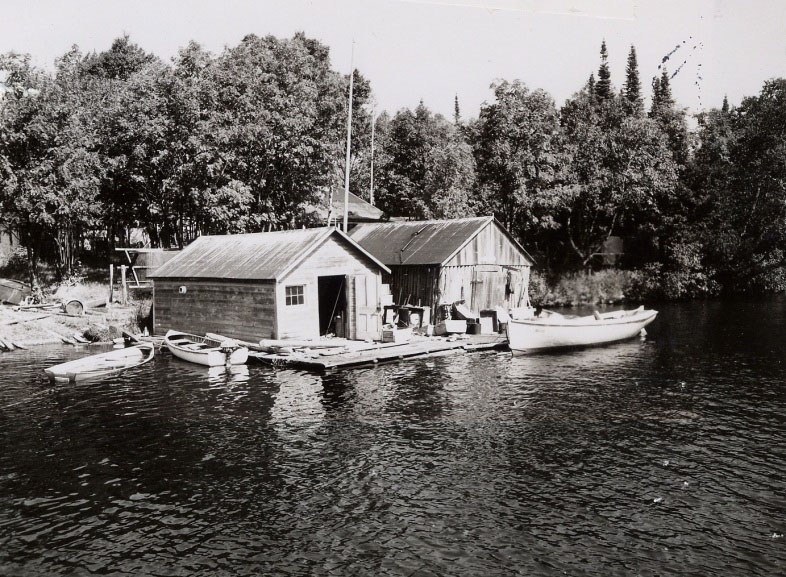
Belle Isle, Date Unknown: NVIC Collection (50-1093), ISRO Archives.
he historic structures and outbuildings you see here are part of Isle Royale's rich cultural heritage. This particular complex was associated with a commercial fishing interest, an activity that has a long and interwoven history on Isle Royale. In contrast with other island endeavors, such as mining, lumbering and tourism, commercial fishing has provided a livelihood for men from the 1830's to times more recent. Nearly every inlet, island, and sound of the archipelago has had its cluster of weatherbeaten shanties, wharves and fishhouses. All commercial fishery locations were subsequently purchased by the federal government following creation of Isle Royale National Park in 1931. Even though the National Park Service now owns all the land and buildings on Isle Royale, some families still return to the former fisheries and are allowed to do so through a special agreement with the National Park Service.
From Private Property to National Park
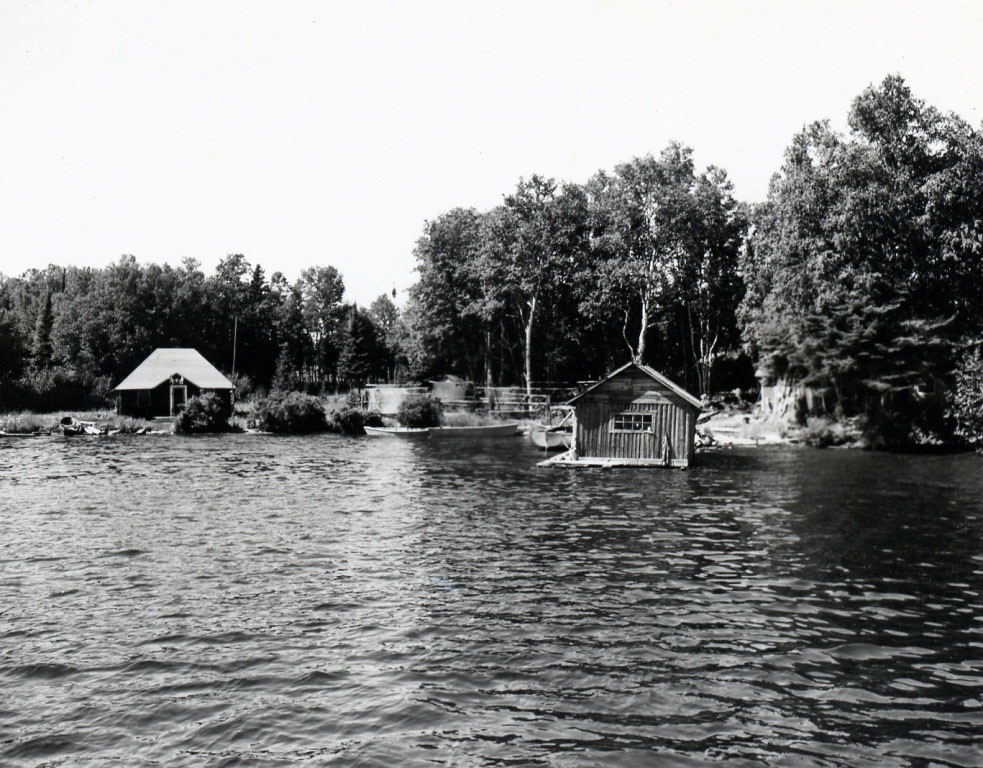
Amygdaloid Island, Date Unknown: NVIC Collection (50-1088), ISRO Archives.
Many of the fisheries were in place before National Park status, some having been established in the late 19th century. However, most fishermen were squatters and did not own the island properties they occupied. In such cases fishermen were permitted to fish commercially within Park waters but on a modest scale. For the fewer number of cases where land was indeed owned, life leases were granted in return for a lower purchase price. The lease agreement was a concept adapted from Shenandoah National Park and allowed former property owners and their next of kin provisional use of the fishery buildings. As part of the agreement, maintenance and upkeep would be performed by the families. In many respects the presence of the remaining fisheries on Isle Royale today can be credited to the tenure of the life lease.
History
By: Lawrence Rakestraw
During its history, Isle Royale has had a variety of economic activities. Of these, commercial fishing has the longest continuous history. Miners came and went in a series of mining rushes. They left scars on the landscape and evidences of their settlement, but these activities were confined to a half century, from 1844 to 1894. Lumbermen made a series of ventures in commercial lumbering between 1892 and 1935, but all of these failed because of strikes, storms, or fire. Tourism began in the 1860's and continues today, but only during the present century has it been of large economic value. By contrast, commercial fishing has provided a livelihood for men from the 1830's to the present.
Fishing, like mining, has left its imprint on the landscape. Nearly every inlet, island, and sound of the archipelago has had its cluster of weatherbeaten shanties, wharves, and fishhouses. On the shore-line of popular fishing grounds such as Hay Bay, Chippewa Harbor, and Long Point are numerous worn-out boats run aground and rotting away. The clearings made in the wilderness by fishermen for gardens, pasture, or buildings have changed the ecology of the area, through modifications in vegetation types and the introduction of plants and flowers from the mainland.
There was probably commercial fishing on Isle Royale before 1800. The Northwest Fur Company got its fish from the north side of the island for its stations at the head of the lake in Western Lake Superior. We have no historical records of the location of these fisheries. There is some archeological evidence that the stations may have been located on Amygdaloid Island, at about the site of the present ranger station, on Indian Point, or on Belle Isle.
More InfoAmerican Fur Company

Download Map: JPEG (4.47MB) | PDF (5.32MB)
Washington Harbor
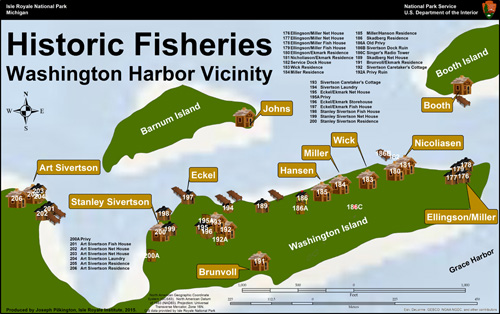
Download Map: JPEG (3.81MB) | PDF (2.50MB)
Siskiwit Bay

Download Map: JPEG (6.62MB) | PDF (4.13MB)
North Shore
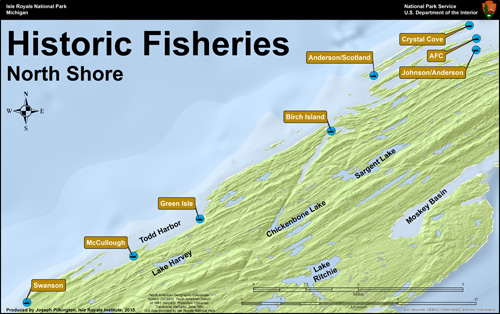
Download Map: JPEG (7.40MB) | PDF (4.27MB)
Rock & Tobin Harbors

Download Map: JPEG (6.25MB) | PDF (4.67MB)
Chippewa Harbor
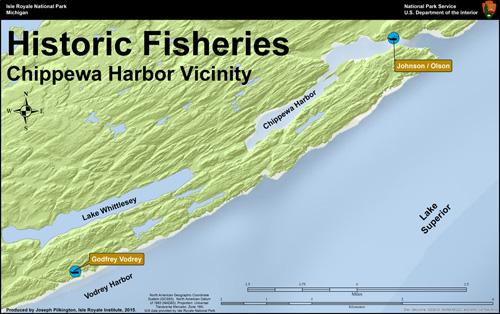
Download Map: JPEG (6.69MB) | PDF (3.41MB)
Citations:
- Rakestraw, L., United States., & Isle Royale Natural History Association. (1968). Commercial Fishing on Isle Royale -- 1800-1967. Houghton, Mich.: Isle Royale Natural History Association in cooperation with the National Park Service.